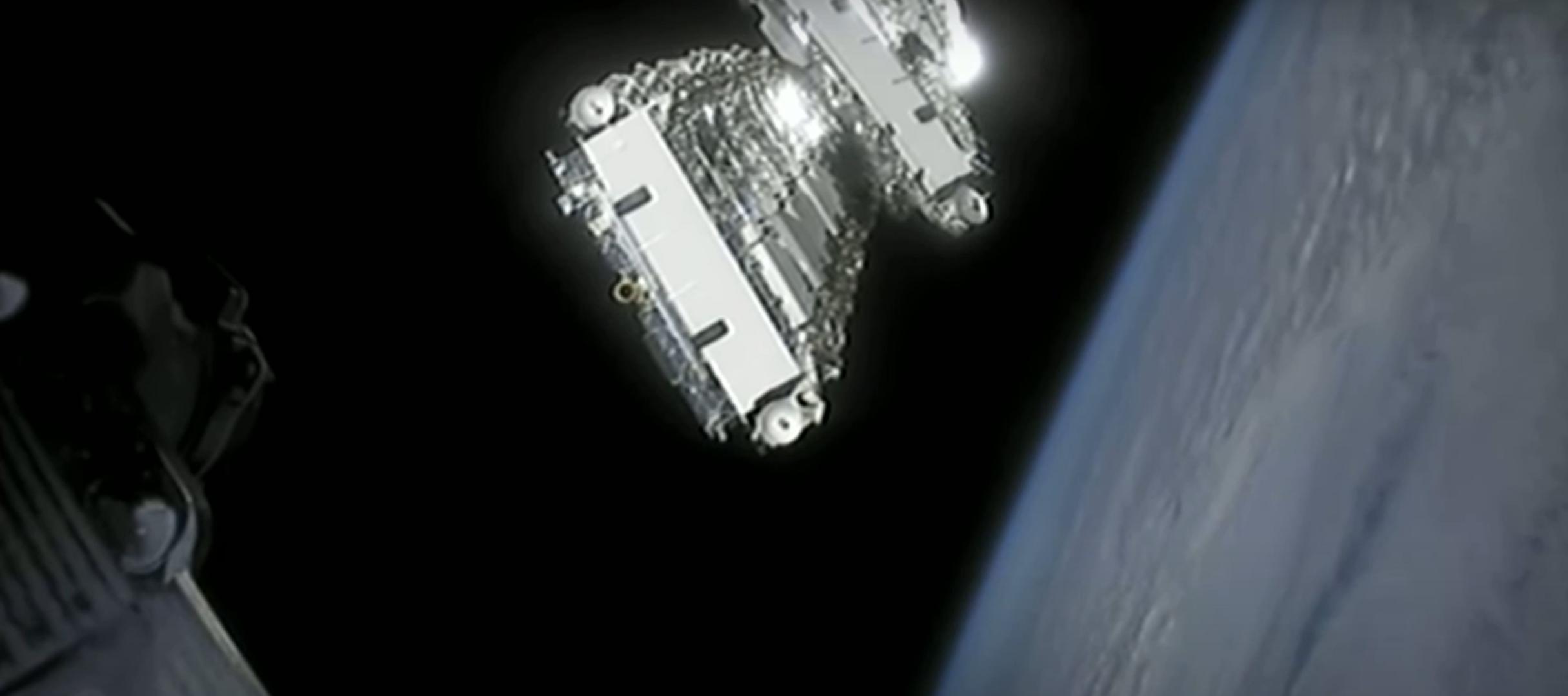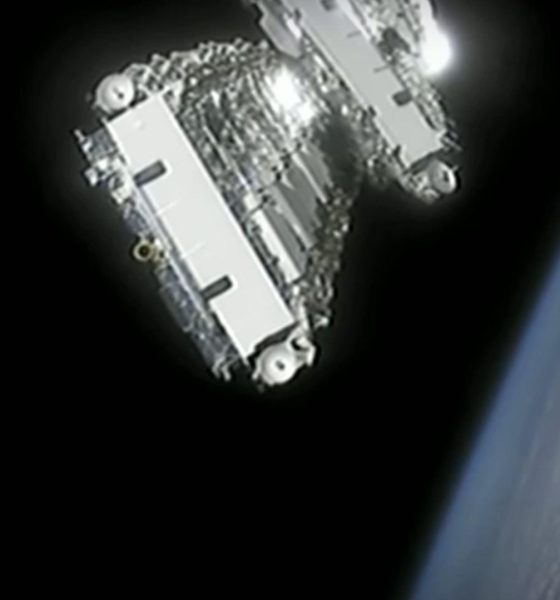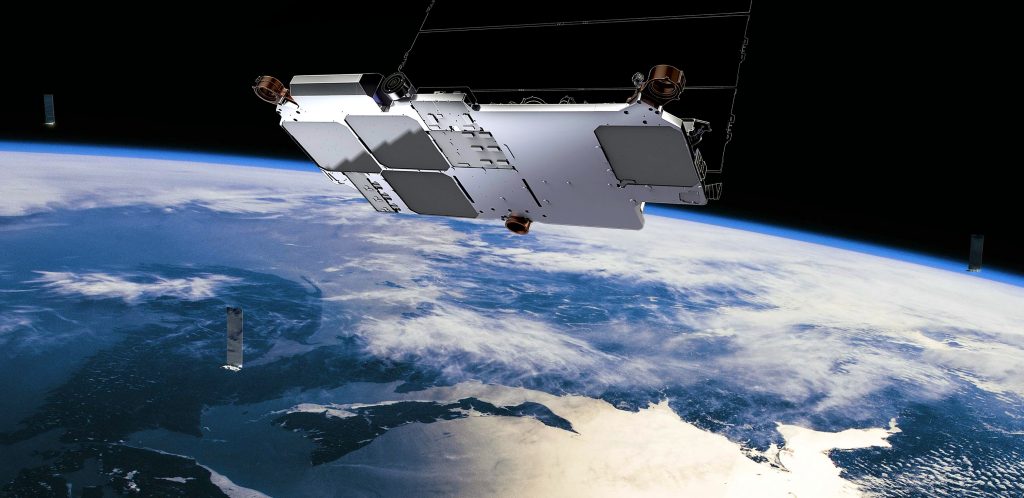

News
SpaceX’s Starlink successes secure US military contract for custom satellites
SpaceX has won $149 million from the Space Development Agency (SDA) to leverage the successes of its Starlink constellation and build custom satellites for the US Department of Defense (DoD).
The development comes as no surprise after SpaceX spent more than six months publishing dozens of job openings for satellite design, development, test, and integration engineers with “top secret” security clearance. Thanks to that paper trail, it’s been apparent for quite some time that SpaceX planned to leverage its nascent satellite design and production capabilities to build custom spacecraft – and even entire constellations – for customers outside of the company.
Perhaps less than coincidentally, that capability closely mirrors a growing desire in the US military to return some level of agility, innovation, and affordability to the development and procurement of space systems (mainly satellites and the ground systems needed to control and communicate with them).

In classic US military fashion, SDA’s contracts appear to mirror DARPA’s (Defense Advanced Research Projects Agency) own Blackjack program. According to DARPA, the “Blackjack program aims to develop and demonstrate the critical elements for a global high-speed network in low Earth orbit (LEO) that provides the Department of Defense with highly connected, resilient, and persistent coverage.” At one point, SDA was seriously considering a role in DARPA’s Blackjack but had no plans to put money where its mouth was as recently as February 2020.
However, in a June 2020 interview, Blackjack project manager Paul Thomas deemed SDA a “very, very awesome partner” that will be directly involved in the launch of two early Blackjack testbed satellites later this year – to be followed by a “subconstellation” (~20 satellites) in 2022.
SDA’s October 5th, 2020 contract awarded SpaceX and L3Harris $149 million and $193 million, respectively, to build four satellites that will spot and track missile launches with wide-field-of-view (WFOV) “overhead persistent infrared” (OPIR) sensors. SDA expects the spacecraft to be ready for launch by September 2022. SpaceX will outsource its OPIR sensors to an unknown company, while L3Harris – already an expert of complex sensor design and production – will build and integrate its own. Bizarrely, DARPA awarded Raytheon $37 million in June 2020 to build and deliver two OPIR sensors for Blackjack satellites by April 2023 – seemingly unrelated to SDA’s October 2020 contract for eight OPIR satellites.
If things go as planned, the eight OPIR satellites SDA is paying $342 million to develop and launch will be the start of a 30-satellite “Tracking Layer” constellation. The Tracking Layer constellation will integrate with a separate “Transport Layer” of 20 laser-interlinked relay satellites to be built by Lockheed Martin ($187.5M) and York Space Systems ($94M) for ~$282 million and launched by September 2022.
Ultimately, it’s ambiguous just how closely SDA and DARPA are working on what currently appear to be separate, partially duplicative constellations of small satellites. Relative to DARPA’s Blackjack program, SDA is pursuing a far more ambitious schedule and has wagered far more resources (more than half a billion dollars) on its plans for a new missile-warning satellite constellation. If SpaceX, L3Harris, Lockheed Martin, and York Space Systems complete their respective work on schedule, SDA could effectively go from the drawing board to an unprecedentedly affordable constellation of 50 cutting-edge satellites in just 28 months – and all while spreading its risk between four unique companies.
Check out Teslarati’s Marketplace! We offer Tesla accessories, including for the Tesla Cybertruck and Tesla Model 3.

Elon Musk
Delaware Supreme Court reinstates Elon Musk’s 2018 Tesla CEO pay package
The unanimous decision criticized the prior total rescission as “improper and inequitable,” arguing that it left Musk uncompensated for six years of transformative leadership at Tesla.

The Delaware Supreme Court has overturned a lower court ruling, reinstating Elon Musk’s 2018 compensation package originally valued at $56 billion but now worth approximately $139 billion due to Tesla’s soaring stock price.
The unanimous decision criticized the prior total rescission as “improper and inequitable,” arguing that it left Musk uncompensated for six years of transformative leadership at Tesla. Musk quickly celebrated the outcome on X, stating that he felt “vindicated.” He also shared his gratitude to TSLA shareholders.
Delaware Supreme Court makes a decision
In a 49-page ruling Friday, the Delaware Supreme Court reversed Chancellor Kathaleen McCormick’s 2024 decision that voided the 2018 package over alleged board conflicts and inadequate shareholder disclosures. The high court acknowledged varying views on liability but agreed rescission was excessive, stating it “leaves Musk uncompensated for his time and efforts over a period of six years.”
The 2018 plan granted Musk options on about 304 million shares upon hitting aggressive milestones, all of which were achieved ahead of time. Shareholders overwhelmingly approved it initially in 2018 and ratified it once again in 2024 after the Delaware lower court struck it down. The case against Musk’s 2018 pay package was filed by plaintiff Richard Tornetta, who held just nine shares when the compensation plan was approved.
A hard-fought victory
As noted in a Reuters report, Tesla’s win avoids a potential $26 billion earnings hit from replacing the award at current prices. Tesla, now Texas-incorporated, had hedged with interim plans, including a November 2025 shareholder-approved package potentially worth $878 billion tied to Robotaxi and Optimus goals and other extremely aggressive operational milestones.
The saga surrounding Elon Musk’s 2018 pay package ultimately damaged Delaware’s corporate appeal, prompting a number of high-profile firms, such as Dropbox, Roblox, Trade Desk, and Coinbase, to follow Tesla’s exodus out of the state. What added more fuel to the issue was the fact that Tornetta’s legal team, following the lower court’s 2024 decision, demanded a fee request of more than $5.1 billion worth of TSLA stock, which was equal to an hourly rate of over $200,000.
Delaware Supreme Court Elon Musk 2018 Pay Package by Simon Alvarez
News
Tesla Cybercab tests are going on overdrive with production-ready units
Tesla is ramping its real-world tests of the Cybercab, with multiple sightings of the vehicle being reported across social media this week.

Tesla is ramping its real-world tests of the Cybercab, with multiple sightings of the autonomous two-seater being reported across social media this week. Based on videos of the vehicle that have been shared online, it appears that Cybercab tests are underway across multiple states.
Recent Cybercab sightings
Reports of Cybercab tests have ramped this week, with a vehicle that looked like a production-ready prototype being spotted at Apple’s Visitor Center in California. The vehicle in this sighting was interesting as it was equipped with a steering wheel. The vehicle also featured some changes to the design of its brake lights.
The Cybercab was also filmed testing at the Fremont factory’s test track, which also seemed to involve a vehicle that looked production-ready. This also seemed to be the case for a Cybercab that was spotted in Austin, Texas, which happened to be undergoing real-world tests. Overall, these sightings suggest that Cybercab testing is fully underway, and the vehicle is really moving towards production.
Production design all but finalized?
Recently, a near-production-ready Cybercab was showcased at Tesla’s Santana Row showroom in San Jose. The vehicle was equipped with frameless windows, dual windshield wipers, powered butterfly door struts, an extended front splitter, an updated lightbar, new wheel covers, and a license plate bracket. Interior updates include redesigned dash/door panels, refined seats with center cupholders, updated carpet, and what appeared to be improved legroom.
There seems to be a pretty good chance that the Cybercab’s design has been all but finalized, at least considering Elon Musk’s comments at the 2025 Annual Shareholder Meeting. During the event, Musk confirmed that the vehicle will enter production around April 2026, and its production targets will be quite ambitious.
News
Tesla gets a win in Sweden as union withdraws potentially “illegal” blockade
As per recent reports, the Vision union’s planned anti-Tesla action might have been illegal.

Swedish union Vision has withdrawn its sympathy blockade against Tesla’s planned service center and showroom in Kalmar. As per recent reports, the Vision union’s planned anti-Tesla action might have been illegal.
Vision’s decision to pull the blockade
Vision announced the blockade in early December, stating that it was targeting the administrative handling of Tesla’s facility permits in Kalmar municipality. The sympathy measure was expected to start Monday, but was formally withdrawn via documents sent to the Mediation Institute and Kalmar Municipality last week.
As noted in a Daggers Arbete report, plans for the strike were ultimately pulled after employer group SKR highlighted potential illegality under the Public Employment Act. Vision stressed its continued backing for the Swedish labor model, though Deputy negotiation manager Oskar Pettersson explained that the Vision union and IF Metall made the decision to cancel the planned strike together.
“We will not continue to challenge the regulations,” Petterson said. “The objection was of a technical nature. We made the assessment together with IF Metall that we were not in a position to challenge the legal assessment of whether we could take this particular action against Tesla. Therefore, we chose to revoke the notice itself.”
The SKR’s warning
Petterson also stated that SKR’s technical objection to the Vision union’s planned anti-Tesla strike framed the protest as an unauthorized act. “It was a legal assessment of the situation. Both for us and for IF Metall, it is important to be clear that we stand for the Swedish model. But we should not continue to challenge the regulations and risk getting judgments that lead nowhere in the application of the regulations,” he said.
Vision ultimately canceled its planned blockade against Tesla on December 9. With Vision’s withdrawal, few obstacles remain for Tesla’s long-planned Kalmar site. A foreign electrical firm completed work this fall, and Tesla’s Careers page currently lists a full-time service manager position based there, signaling an imminent opening.








